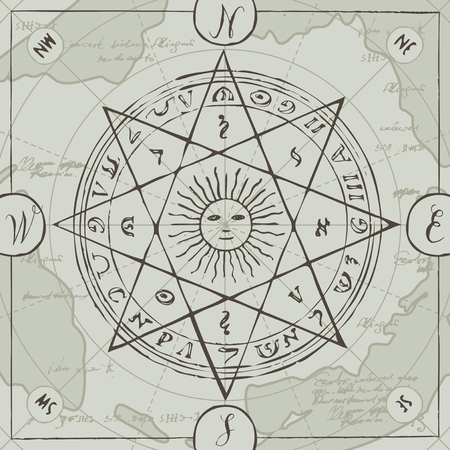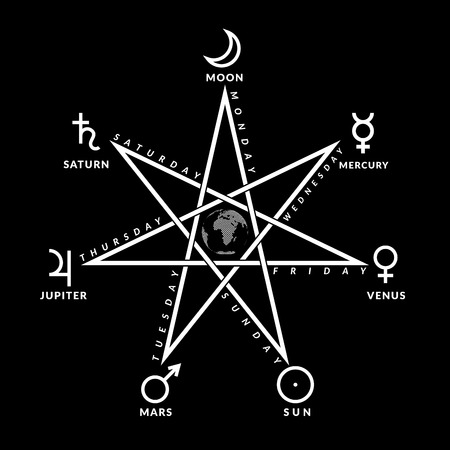1. Introduction: The Moon’s Enchantment in British Culture
The new moon has long cast its gentle, silvery spell over the British Isles, weaving a subtle thread through the nation’s history, landscape, and imagination. From mist-shrouded moors to ancient stone circles, the lunar cycle has inspired awe and wonder among generations of Britons. The new moon phase, in particular—a time of darkness before rebirth—has been regarded with both reverence and curiosity. It is during this liminal period that age-old traditions whisper of magic and transformation, where folklore blends seamlessly with lived experience. In the shadowy glow of the new moon, witches once gathered to honour nature’s rhythms, while villagers recited charms for protection or prosperity. This enduring connection between the lunar calendar, witchcraft practices, and local legend is deeply woven into Britain’s cultural tapestry. As we journey through these traditions, we will discover how the new moon continues to shape beliefs and customs across centuries, inviting us to look skyward with a sense of possibility and gentle wonder.
2. Ancient Roots: Pre-Christian Lunar Rituals in the British Isles
The story of lunar magic in the UK begins long before written history, in a time when the moon’s cycles governed not just the skies but also the daily rhythms of ancient peoples. Across the mist-laden landscapes of the British Isles, pre-Christian societies such as the Celts, Anglo-Saxons, and earlier indigenous tribes wove intricate rituals and beliefs around the waxing and waning of the moon. These early traditions laid down the spiritual bedrock for much of what we now recognise as British witchcraft and folklore.
The Moon as Sacred Timekeeper
For these ancient cultures, the moon was more than just a luminous presence overhead; it was a vital calendar marking agricultural cycles, festivals, and rites of passage. The New Moon signalled times for sowing seeds or setting intentions, while the Full Moon illuminated nights of celebration or divination. This celestial body became an enduring symbol of rebirth, transformation, and hidden knowledge—a motif that echoes through modern witchcraft.
Celtic Lunar Traditions
The Celts, whose legacy still lingers in place names and folk customs across Wales, Scotland, Ireland, and England, revered the moon as a goddess—often depicted as Arianrhod or Cerridwen. Their Druidic priests would gather at key lunar phases to perform sacred ceremonies, seeking guidance from the Otherworld or blessing crops for abundance. Sacred groves, stone circles like Stonehenge and Avebury, and hilltop sites became gathering places for these moonlit rituals.
Anglo-Saxon & Indigenous Practices
Meanwhile, Anglo-Saxon traditions blended Germanic mythologies with local customs. The word “monath,” meaning month, reveals how tightly lunar cycles were woven into daily life. Rituals often honoured goddesses such as Eostre (the namesake of Easter) during springtime New Moons. Offerings of milk, honey, or grain were made to ensure fertility and protection.
Comparing Key Lunar Customs
| Culture | Lunar Deity/Focus | Ritual Purpose | Sacred Sites & Symbols |
|---|---|---|---|
| Celtic | Arianrhod/Cerridwen Moon Goddess |
Divination Blessings for crops Initiation rites |
Stone circles Oak groves Cauldrons |
| Anglo-Saxon | Eostre & other goddesses | Fertility Protection Marking seasons/months |
Barrows Sacred wells Hearth altars |
| Pictish/Other Indigenous Tribes | Nature spirits/Lunar animals (hares) | Shapeshifting myths Ancestor veneration |
Pictish stones Lunar carvings Hill forts |
A Legacy Written in Shadows and Stars
The richness of these early lunar rituals continues to shimmer at the edges of modern British folklore. From age-old proverbs about cutting hair on a New Moon for luck to tales of hares seen dancing under silver light—each tradition speaks to an ancient reverence for cycles beyond human control. As we explore further into Britain’s magical history, we find these roots entwined with every new phase of lunar-inspired belief.

3. Witchcraft and the New Moon: Spellwork, Mystery, and Tradition
The enigmatic darkness of the new moon has long enchanted practitioners of British witchcraft, weaving together a tapestry of spellwork, secrecy, and sacred tradition. Unlike the full moon’s luminous revelations, the new moon’s shadowy embrace offers witches a liminal space—a threshold brimming with untapped potential. In the heartlands of the UK, from windswept moors to ancient woodland clearings, generations of cunning folk and wise women have reimagined the new moon as a potent time for both transformation and protection.
Lunar Spellcasting: Channelling Beginnings
Across English villages and Scottish glens alike, the new moon was cherished as a moment to sow seeds—both literal and magical. Witchcraft during this phase often focused on spells designed to initiate fresh starts, break old habits, or invite renewal. Folk recipes for new moon rituals might call for local herbs such as rowan or mugwort, gathered under a starless sky, their essence believed to amplify intentions whispered into the night. With careful preparation, witches would cast charms for prosperity or healing, trusting that the waxing crescent would nurture their desires into fruition.
Ceremonies Cloaked in Secrecy
Traditional British witchcraft values privacy and subtlety; thus, many ceremonies during the new moon took place away from prying eyes. Small covens or solitary practitioners might gather by candlelight in secluded corners of their homes or beneath ancient yew trees, reciting incantations passed down through families. These gatherings were tinged with an air of quiet reverence—the new moon’s hidden face reflecting the secret knowledge shared between initiates.
Harnessing Energy for Transformation and Protection
More than mere superstition, harnessing the energy of the new moon was seen as an act of empowerment. Witches used this lunar window to craft protective amulets from blackthorn wood or sea-worn pebbles found along Britain’s rugged coastlines. It was also a time for inner work: meditative practices aligned with personal transformation, letting go of burdens or fears in order to step forward renewed. For those attuned to these ancient rhythms, each new moon remains a gentle reminder that within every darkness lies the promise of rebirth—a wisdom echoing through centuries of British magical tradition.
4. Folkloric Tales and Lunar Superstitions Across the UK
The British Isles are woven together by threads of folklore that shimmer brightest beneath the new moon. Each region, from the misty Highlands to the cobbled lanes of Cornwall, holds its own patchwork of beliefs—sometimes whimsical, sometimes wise—about this lunar phase. Let us gently wander through these tales, unearthing how communities have looked to the new moon for luck, love, and a little bit of everyday magic.
Lunar Luck and Local Rituals
Across centuries, people in Britain have greeted the new moon with small acts of hope and reverence. In rural villages, it was common for folks to turn coins in their pockets or bow respectfully when they first glimpsed the slender crescent. Such gestures were believed to invite prosperity or ensure a month free from misfortune. These traditions linger in memory and practice, carrying with them a sense of gentle optimism that feels quintessentially British.
Regional Superstitions: A Table of Traditions
| Region | Superstition/Belief | Purpose/Meaning |
|---|---|---|
| Scotland | Bowing or curtseying to the new moon and reciting a blessing | Ensuring health and good fortune for the coming month |
| Cornwall | Sweeping out the house on the new moon night | Clearing away bad luck and welcoming fresh beginnings |
| Northern England | Turning silver coins over at first sight of the new moon | Encouraging wealth and warding off poverty |
| Wales | Avoiding pointing at the moon with a bare finger | Preventing bad luck or ailments such as warts |
| London & Urban Areas | Telling urban legends about “moon madness” during the lunar phase changes | Explaining odd behaviour or unexpected events in city life |
The New Moon’s Gentle Warnings
Not all lunar lore is purely hopeful—there are cautionary tales too. Some say that gazing too long at a new moon might invite melancholy or muddled thoughts; others warn against making major decisions until after the first crescent has brightened. These gentle admonitions reflect an age-old respect for forces beyond our control, encouraging patience and humility as each lunar cycle begins anew.
Through all these customs—be they whispered superstitions or beloved family rituals—the new moon remains a quiet companion in British folk life, offering both comfort and a touch of mystery as darkness gives way to light once again.
5. Intertwined Fates: Astrology, New Moons, and British Star Lore
When we gaze up at the night sky from a windswept British moor or a quiet suburban garden, we are peering into a tapestry woven with centuries of story and symbolism. The new moon, so often shrouded in both literal and mystical shadow, has always held a place of quiet power in the folk traditions and astrological wisdom of these isles. Here, the interplay between lunar phases and star lore becomes not just an act of stargazing, but a deeply personal journey—one that threads through local customs and everyday guidance.
The Lunar Cycle as Life’s Rhythm
In British folklore, every phase of the moon carries its own unique energy. Yet it is the new moon—a time when the sky is at its darkest—that marks both an ending and a fresh beginning. Local tradition suggests this is when intentions whispered beneath ancient oaks or beside stone circles are most likely to take root. Villagers once cast their wishes or worries to the new moon, believing its invisible pull could sway fate itself. Such rituals reveal how closely lunar cycles were observed and honoured, not just for divination but for practical guidance in farming, relationships, and health.
Stars Above, Stars Within
British star lore intertwines with zodiac wisdom in quietly enchanting ways. Astrologers here have long mapped out destinies using both planetary movements and the subtle cues from lunar phases. A new moon in Taurus might inspire planting or building projects; one in Pisces would be ideal for dreams and poetic endeavours. These beliefs filtered down into daily life: fishermen would consult almanacs before heading out at dawn, while midwives kept a keen eye on lunar calendars to predict births. Over time, such practices became woven into the fabric of local custom—reminders that our fates are written not only in the stars above us but also within us.
Everyday Magic: Practical Guidance from the Heavens
Even today, echoes of this tradition linger across Britain. From horoscope columns in village papers to moon-watching circles gathering on Dartmoor or along the Thames, people still seek meaning and reassurance from the rhythms of the night sky. Whether you’re marking a new chapter by lighting a candle at dusk or simply pausing to reflect under the first sliver of crescent light, you are participating in a legacy as old as these lands themselves—a gentle dance between destiny, folklore, and the ever-present promise of renewal carried on each new moon.
6. Modern Revival: Contemporary Witchcraft and Lunar Practices
In today’s Britain, the ancient allure of the new moon finds fresh expression within a vibrant landscape of contemporary witchcraft and spiritual exploration. As urban centres pulse with modern life and rural corners quietly honour tradition, more people are discovering—or rediscovering—the magic of lunar rituals. British practitioners, whether solitary or part of covens, are weaving together age-old wisdom and new perspectives, giving rise to a diverse community where the new moon is cherished as both a mystical threshold and a moment for personal growth.
The Urban Witch: Lunar Magic in City Life
Across London, Manchester, and Edinburgh, you’ll find urban witches gathering under high-rise shadows or in cosy living rooms, creating sacred spaces amidst the city bustle. These covens often blend traditional British folklore with global influences, lighting candles, meditating, and setting intentions during the new moon. For many, these rituals offer a gentle pause—a way to reconnect with nature’s cycles even in concrete jungles. The language may be modern, but the heart of the practice remains deeply rooted in respect for lunar rhythms and ancestral wisdom.
Mindful Moon Gatherings
Beyond formal covens, community-led moon circles have blossomed across the UK. In Bristol or Brighton, you might stumble upon mindful gatherings in local parks or community halls—open to witches and non-witches alike—where participants share reflections, set intentions, and craft charms under the waxing crescent’s watchful eye. These inclusive spaces invite people from all walks of life to connect with themselves and each other through shared ritual. Here, the new moon becomes less about casting spells and more about embracing self-care, intention-setting, and collective empowerment.
Reinterpreting Tradition with a Modern Touch
What makes this revival so beautifully British is its balance between tradition and innovation. Some practitioners draw inspiration from the likes of Gerald Gardner and Doreen Valiente—key figures in mid-20th-century Wicca—while others incorporate elements from indigenous Celtic practices or even astrology. Social media has become a digital hearth where knowledge is exchanged; Instagram posts about “moon baths” sit side by side with discussions on Cornish folk spells. The result is an evolving tapestry: respectful of roots yet unafraid to adapt old customs for new times.
For many across Britain today, the new moon isn’t just a phase on the calendar—it’s an invitation to pause, reflect, and dream anew. Whether among friends in candlelit circles or alone beneath a cloudy sky, contemporary lunar practices continue to echo with gentle power: bridging past and present while nurturing hope for what’s yet to come.
7. Conclusion: The Gentle Glow of the New Moon Through British Time
As we reach the quiet close of our journey through Britains lunar lore, it is impossible not to feel a gentle awe for the enduring presence of the new moon in UK culture. Across rolling hills and bustling cities, from mist-shrouded highlands to ancient woodlands, the delicate sliver of the new moon has always captured British hearts—its unseen glow both comforting and mysterious. Even as centuries pass and customs shift, there remains a special resilience in these traditions. Each generation, whether knowingly or by instinct, turns its gaze skyward on those darkest nights, seeking guidance, inspiration, or simply a sense of connection to something larger than themselves.
The new moon continues to illuminate our collective imagination, weaving itself into spiritual practice and everyday superstition alike. It reminds us that even what is hidden can shape our stories and beliefs, encouraging us to trust in beginnings that are gentle rather than grand. Whether found in a whispered wish or a carefully kept ritual, the new moon glows softly at the heart of British folklore—a timeless companion guiding us with subtle wisdom through each turning season. In this way, the lunar cycle is not just an echo from the past but a living thread, binding communities and individuals together under its ever-renewing light.


